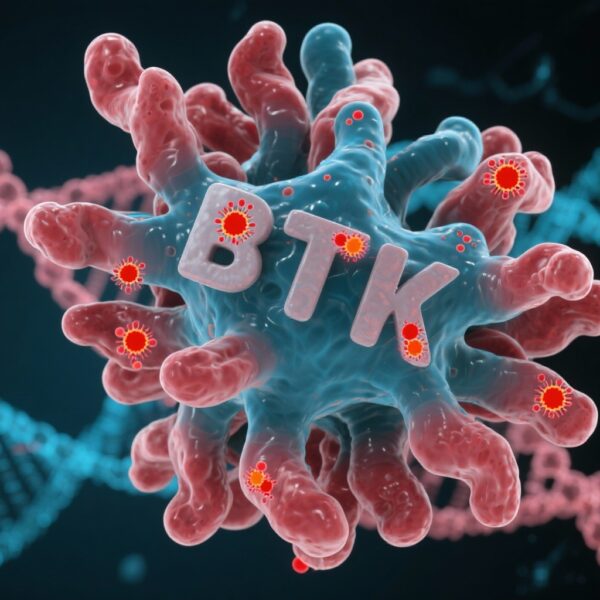Highlight
The Prospective Cutaneous Lymphoma International Prognostic Index (CLIPI) enables precise risk stratification in advanced-stage mycosis fungoides (MF) and Sézary syndrome (SS), diseases with otherwise poor survival outcomes. CLIPI integrates four independent prognostic factors—N3 lymph node status, age over 60, elevated serum lactate dehydrogenase (LDH), and large-cell transformation in skin—to classify patients into low-, intermediate-, and high-risk groups with distinct 5-year overall survival rates (63.3%, 44.7%, and 18.3%, respectively). This model surpasses traditional staging systems by better capturing heterogeneity and supporting optimal treatment decisions.
Study Background
Advanced mycosis fungoides and Sézary syndrome, types of cutaneous T-cell lymphomas, are aggressive skin lymphomas characterized by poor long-term prognosis, often with an overall survival (OS) below five years. Despite defined clinical staging (ranging from IA to IVB), existing classification schemes struggle to accurately predict outcomes within advanced stages, limiting their utility for individualized patient care. Optimal risk stratification tools that can reliably identify subsets of patients with disparate prognoses are needed to guide treatment intensity and clinical trial design.
Study Design
The PROCLIPI study is an international, prospective, multicenter registry launched in 2015 encompassing 46 expert centers worldwide. It enrolled 552 patients newly diagnosed with advanced-stage MF or SS (beyond stage IIA). Predefined clinical and laboratory data were systematically collected at diagnosis, including lymph node involvement per N3 criteria, serum LDH levels, patient age, and histopathological evidence of large-cell transformation in skin biopsies. The study aimed to identify independent prognostic factors to develop and validate a prognostic index tailored for advanced cutaneous lymphoma, the CLIPI. Survival outcomes were monitored prospectively, with a primary endpoint of 5-year overall survival comparison across risk groups.
Key Findings
The study revealed variable 5-year OS across traditional advanced stages, with survival not correlating linearly with stage: Stage IIB yielded 50.0% survival, IIIA 64.8%, IIIB 43.9%, IVA1 50.8%, IVA2 25.9%, and IVB 36.9%. This complexity highlighted the insufficiency of staging alone as a prognostic tool.
Multivariate analysis identified four independent adverse prognostic factors significantly associated with worse survival outcomes:
- N3 lymph node status (P < .001), indicating extensive nodal involvement.
- Age greater than 60 years (P < .001), reflecting poorer physiological reserve and comorbidities.
- Elevated serum lactate dehydrogenase (LDH) (P = .005), a marker of tumor burden and cellular turnover.
- Large-cell transformation in the skin (P = .006), denoting histologic progression associated with aggressive behavior.
Integrating these factors, the CLIPI stratified patients into three prognostic groups with statistically significant differences in survival (P < .001 overall):
| Risk Group | Definition | 5-Year OS (%) |
|---|---|---|
| Low-risk | Absence or minimal presence of the four adverse factors | 63.3 |
| Intermediate-risk | Presence of one to two adverse factors | 44.7 |
| High-risk | Presence of three or four adverse factors | 18.3 |
The CLIPI demonstrated superior prognostic discrimination compared to traditional staging, with clear survival gradients within an otherwise heterogeneous advanced-stage patient population. The model’s granularity enables identification of patients at highest risk who may benefit from intensified therapies and closer monitoring, as well as lower-risk patients who may avoid overtreatment.
Expert Commentary
The development of CLIPI represents an important advance in personalized management of advanced MF and SS. By prospectively validating a prognostic index based on readily accessible clinical and pathological parameters, the PROCLIPI consortium has provided a practical tool for risk stratification beyond conventional staging systems. As Dr. John J. Scarisbrick and colleagues note, the lack of a uniform, internationally accepted prognostic score has long hindered clinical decision-making and trial design in cutaneous lymphoma.
Importantly, the four components of CLIPI are biologically plausible drivers of poor outcomes: extensive nodal involvement often reflects systemic dissemination; older age correlates with decreased treatment tolerance; elevated LDH signals tumor aggressiveness; and large-cell transformation is a well-recognized marker of histopathologic progression. This mechanistic alignment enhances the model’s credibility.
However, limitations should be acknowledged. Although prospective and multinational, validation in external cohorts with different demographics would strengthen generalizability. The index does not yet incorporate molecular or genetic biomarkers that may further refine prognosis. Additionally, how treatment regimens interact with CLIPI risk groups to alter survival remains to be defined, warranting prospective clinical trials to evaluate risk-adapted therapies.
Conclusion
The CLIPI index offers a robust, evidence-based framework for prognostic stratification in patients with advanced mycosis fungoides and Sézary syndrome. By integrating four independent factors linked to survival, it better delineates patient risk groups compared to traditional staging. This enables clinicians to tailor therapeutic strategies appropriately, potentially improving clinical outcomes and optimizing resource allocation. Further studies are needed to validate CLIPI across diverse populations and integrate emerging biomarkers to enhance its precision.
The PROCLIPI trial registration number is NCT02848274.
Funding and ClinicalTrials.gov
This study was conducted through a multinational collaborative effort supported by institutional and research grants as detailed in the original publication. The clinical trial is registered at ClinicalTrials.gov under identifier #NCT02848274.
Reference
Scarisbrick JJ, Quaglino P, Whittaker S, et al. A new prognostic index (CLIPI) for advanced cutaneous lymphoma enables precise patient risk stratification. Blood. 2025 Oct 2;146(14):1687-1692. doi: 10.1182/blood.2025029628. PMID: 40663780.


